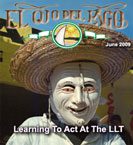America’s Southwestern Border

Despite a drug war that has convulsed Mexico, a broad array of data shows that America’s southwestern border is increasingly safe, secure and, thanks to measures launched by President George W. Bush and sustained by President Obama, making it much harder for illegal immigrants to cross. Yet against substantial and mounting evidence, Republicans in Congress continue to portray the border as beset by rising violence, out of control and a grave threat to national security.
Given the clear data, it is hard to view these scare tactics as anything but a cynical effort to distort the debate on immigration reform. The intent is to distract Americans from the problem of 11 million immigrants here illegally by pointing to an imaginary wave of crime and instability at the border. Of course, goes the argument, we need immigration reform, but we can’t possibly achieve it until order is restored.
The Republican strategy is dishonest and effective. “This is a national security threat,” Sen. John Cornyn, a Texas Republican, told a congressional hearing. “So we need to regain the confidence of the American people before they’re going to allow us to move forward .?.?. to fix our broken immigration system.”
Rep. Michele Bachmann, a Republican presidential hopeful, agreed with a questioner at a town forum this week that U.S. troops should be redeployed from South Korea to south Texas — a move that might comfort the North Koreans but would have little or no effect in Texas.
In fact, it is Mr. Cornyn himself, along with others who make sensational statements, who undermine the confidence about the border he says “we need to regain.” They do so with misrepresentations and twisted statistics whose effect is to obscure the dramatic drops in illegal border crossings and violent crime along the border.
One of the GOP’s favorite bits of rhetorical ammunition comes from the Government Accountability Office, which said in a report this year that 44 percent of the Mexican border is not under the Border Patrol’s “operational control.” In fact, most of that 44 percent includes the border’s most remote, inaccessible, sleepy and least-crossed terrain — hardly the peril Mr. Cornyn and others make it out to be. Still, many Republicans trot out the 44 percent at every opportunity, conjuring the image of an un-policed free-for-all on the border.
The truth is very different. Nearly 18,000 Border Patrol agents are now deployed at the border, a force that has nearly doubled since 2004, in addition to thousands of personnel from other federal agencies as well as hundreds of National Guardsmen.
Thanks to that presence, as well as to economic, demographic and other factors in Mexico and the United States, apprehensions of illegal border crossers by the U.S. Border Patrol — a fair measure of the border’s porosity — have been cut by three-quarters over the past decade.
On current trends, including a 30 percent drop in the past 10 months compared to the same period of 2010, the number of apprehensions in fiscal year 2011 will be the lowest in 40 years. In other words, illegal immigration has fallen to levels last seen in the Nixon administration.
- April 2024 – Issue - March 31, 2024
- April 2024 – Articles - March 31, 2024
- April 2024 - March 31, 2024









